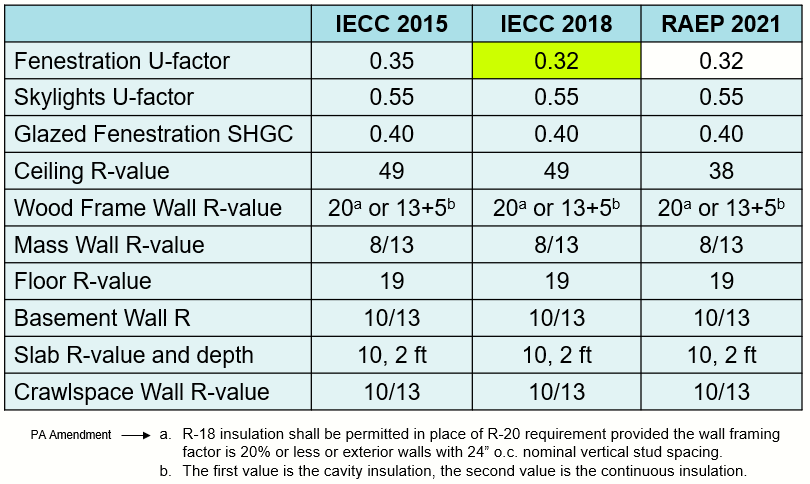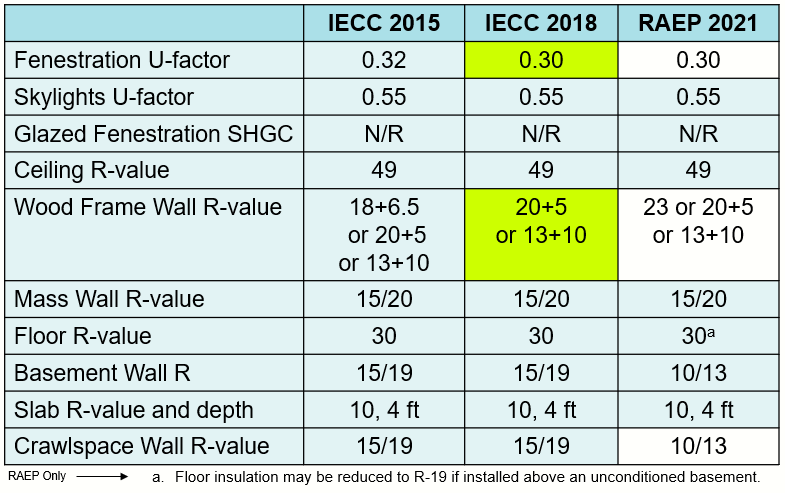

The prescriptive tables in the 2018 IRC/IECC set minimum acceptable insulation and fenestration performance levels based on geographic area.
If a builder chooses the prescriptive path, these requirements must simply be met. If a performance path is chosen, the overall energy use of the building must be equal to or better than if the house had been built to these requirements.
In PA, builders also have the option of selecting the less restrictive prescriptive requirements in the "PA Residential Alternative Energy Provisions" (RAEP), as long as they also agree to implement one of the "Enhanced Measures" listed in that document.
Here is a comparison of the prior (2015 IECC) requirements to the current IRC/IECC requirements, as well as the RAEP. 2018 IRC/IECC changes are highlighted in Yellow. 2021 RAEP changes are in white.
Keep in mind that there are a number of footnotes and additional details in the code documents that may affect specific projects.

Windows: must now meet a more stringent U-factor requirement of 0.32.

Windows: must now meet a more stringent U-factor requirement of 0.30

Windows: must now meet a more stringent U-factor requirement of 0.30
Framed Walls: the PA amendments that previously allowed R18 cavity insulation plus R6.5 continuous insulation are no longer included
Basement Wall REAP-only Detail: R-10 continuous or R-13 in cavities is allowed.
The 2018 IECC that requires R-8 duct insulation, plus ceiling insulation above and below the ducts that totals at least R-19, excluding the value of the duct insulation.

The 2018 IRC/IECC (like the 2015 versions) includes a requirement that the R-value of insulated siding be reduced by R-0.6 from the manufacturer's lableled value.
